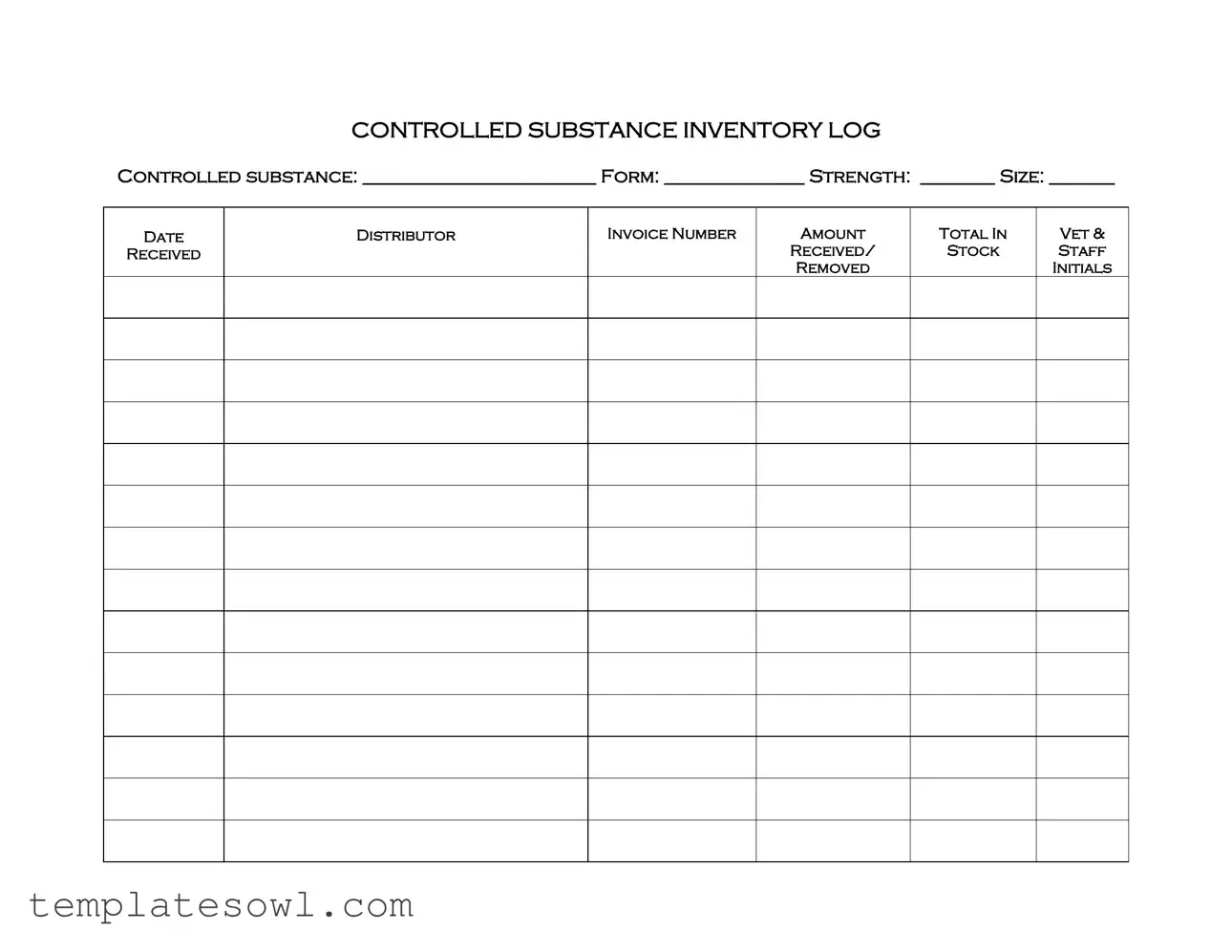What is the purpose of the Controlled Drug Log form?
The Controlled Drug Log form helps track the use and distribution of controlled substances within a facility. This log is essential for maintaining accurate records and ensuring compliance with regulations. It helps to monitor inventory levels and prevent misuse or diversion of these substances.
What information do I need to fill out on the form?
You'll need to provide several key details on the form. These include the controlled substance's name, form (e.g., tablet, liquid), strength, size, date of receipt, name of the distributor, invoice number, quantity received, and the initials of the staff member who logged it. This information provides a complete picture of the drug’s status in the facility.
How should I record the amount of controlled substance received?
When you receive a controlled substance, you should note the exact amount in the designated space on the form. Ensure that you verify the quantity against the invoice before recording it. Keeping an accurate amount prevents discrepancies and helps keep records in order.
Who is responsible for filling out the Controlled Drug Log form?
Typically, the staff member who receives the controlled substance is responsible for filling out the log. However, it’s good practice to have a designated person or team oversee the log to ensure consistency and compliance with regulations.
What should I do if I notice an error on the form?
If you find an error on the Controlled Drug Log form, you should correct it immediately. Cross out the incorrect information and write the correct details next to it, then initial the change. This practice is important for maintaining accurate records and demonstrating accountability.
How often should the Controlled Drug Log be reviewed?
It’s advisable to review the Controlled Drug Log regularly, ideally after each transaction or at least weekly. Regular reviews help in identifying inconsistencies, ensuring compliance, and managing inventory effectively.
What should I do if a controlled substance is lost or stolen?
In case of loss or theft of a controlled substance, it’s crucial to report the incident immediately to your supervisor. An investigation should be initiated, and proper documentation should be completed. This step helps in tracking issues and improving security measures.
Can I use the Controlled Drug Log form for substances that are not controlled?
No, the Controlled Drug Log form is specifically designed for controlled substances. Using it for non-controlled items may lead to confusion and improper record-keeping. It's better to use a different log or inventory management system for non-controlled substances.
Are there any specific storage requirements for controlled substances?
Yes, controlled substances must be stored securely. They should be kept in a locked cabinet or safe, with limited access to authorized personnel only. Adhering to these guidelines not only ensures safety but also complies with legal requirements.
